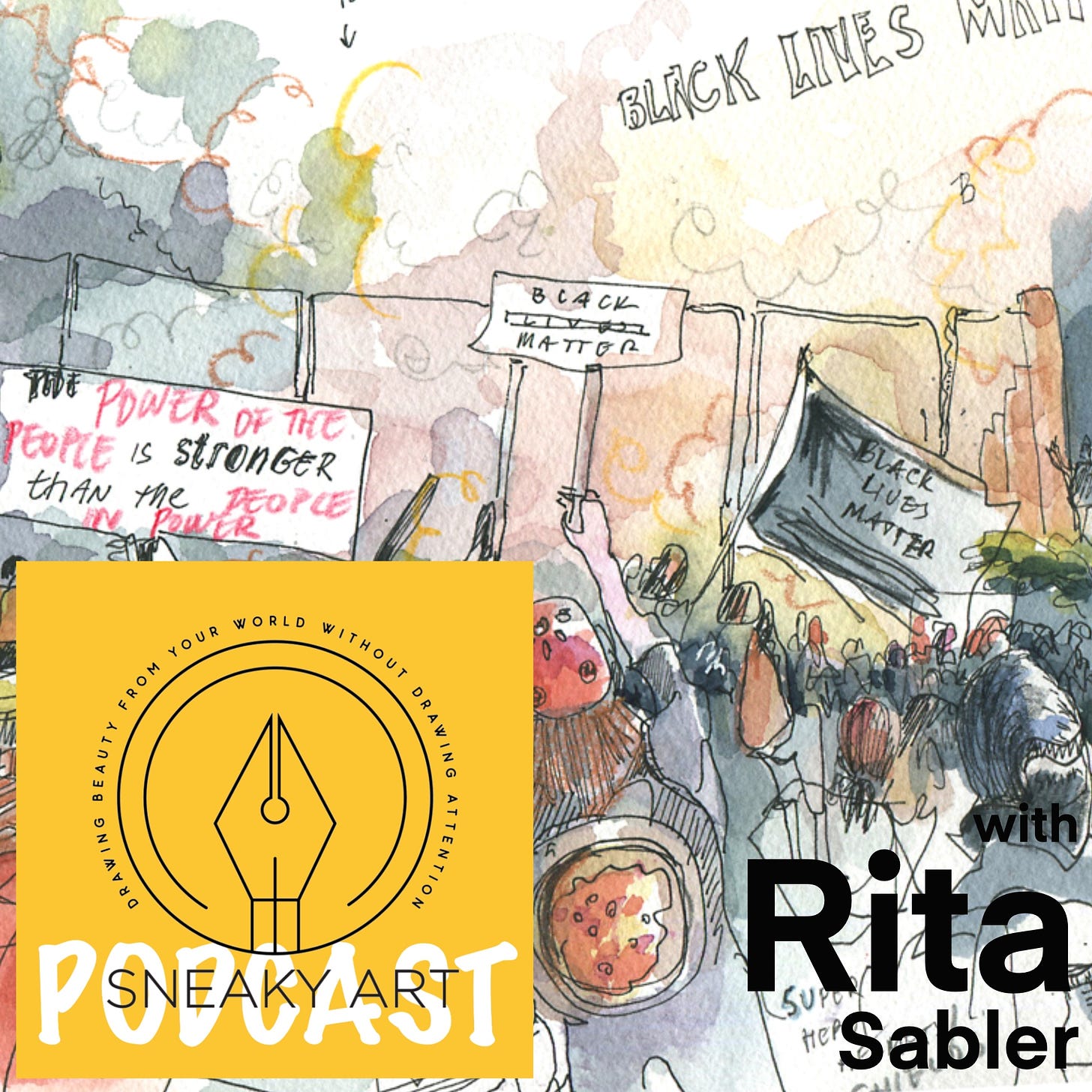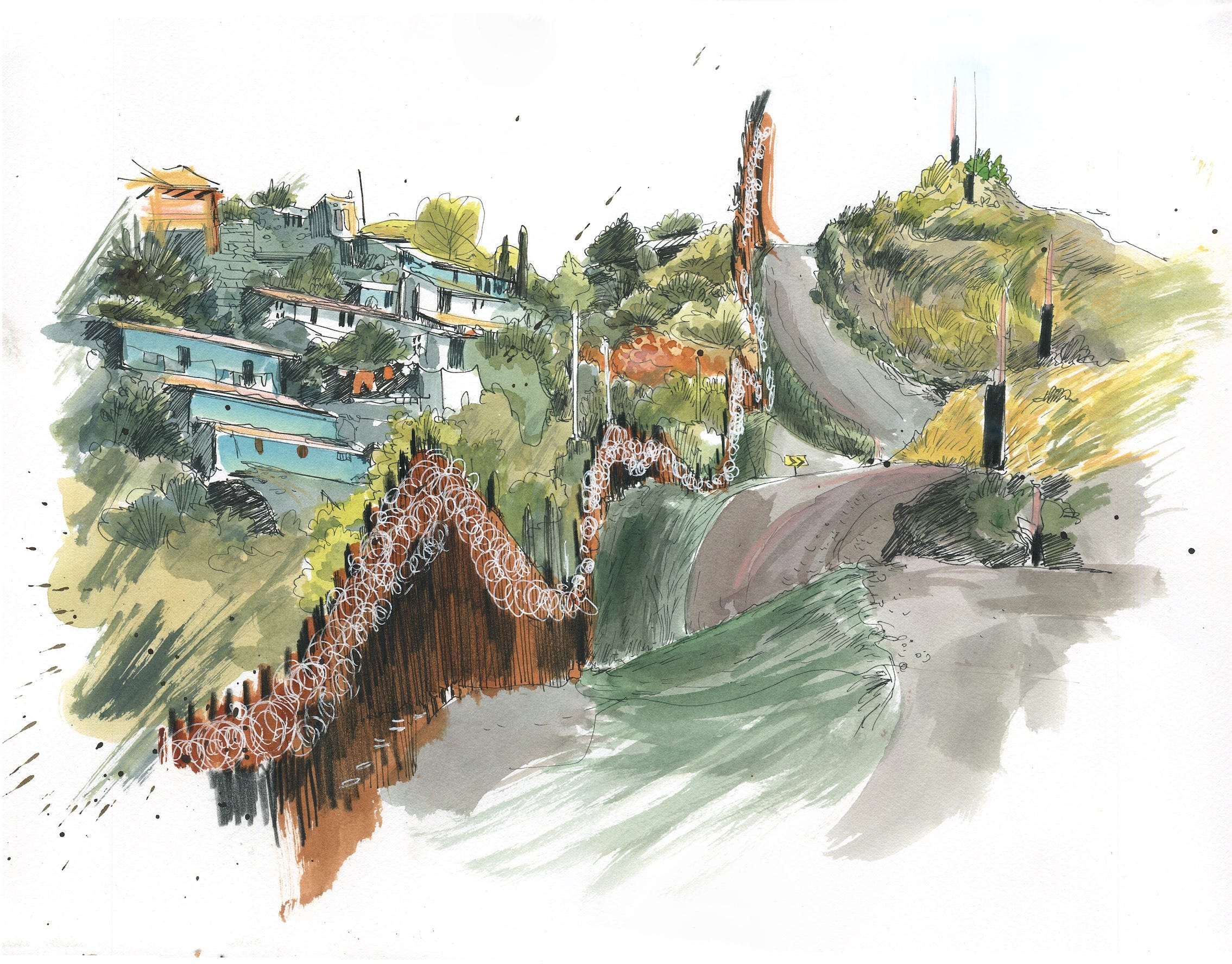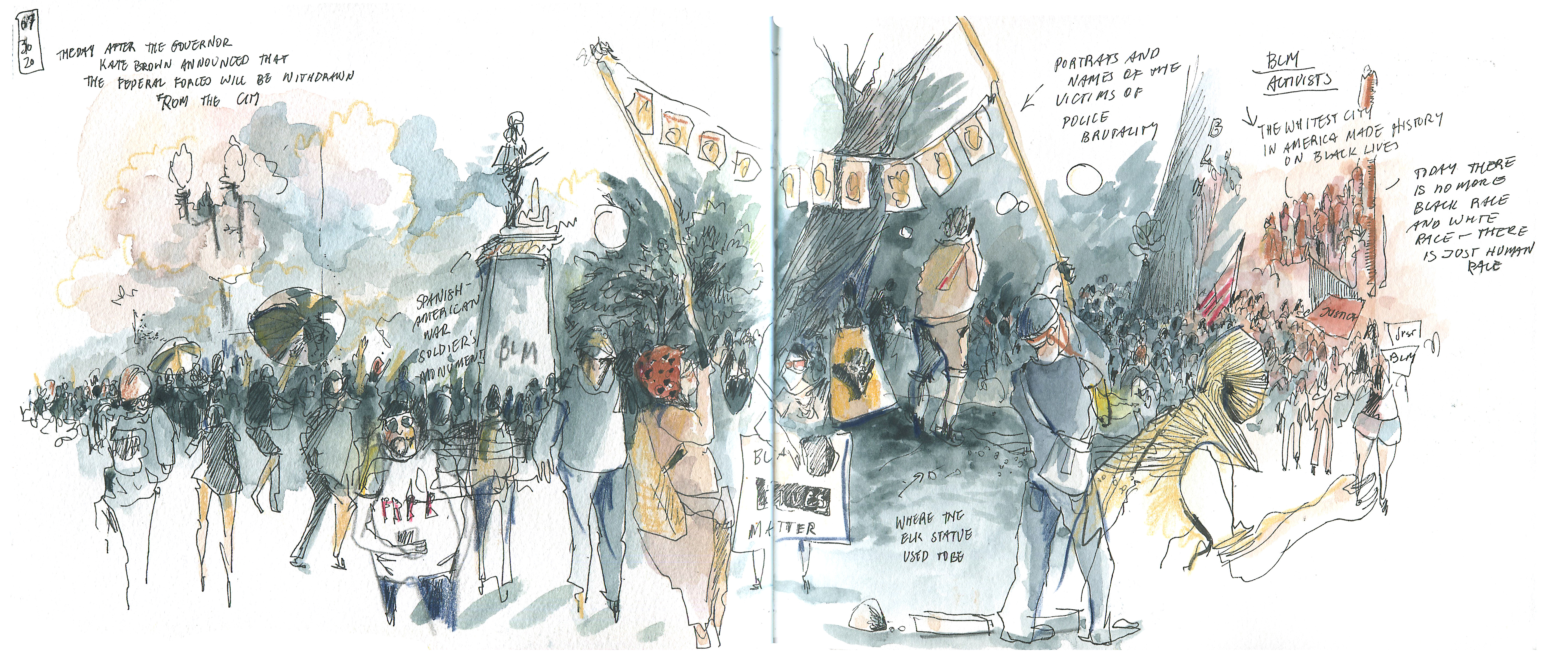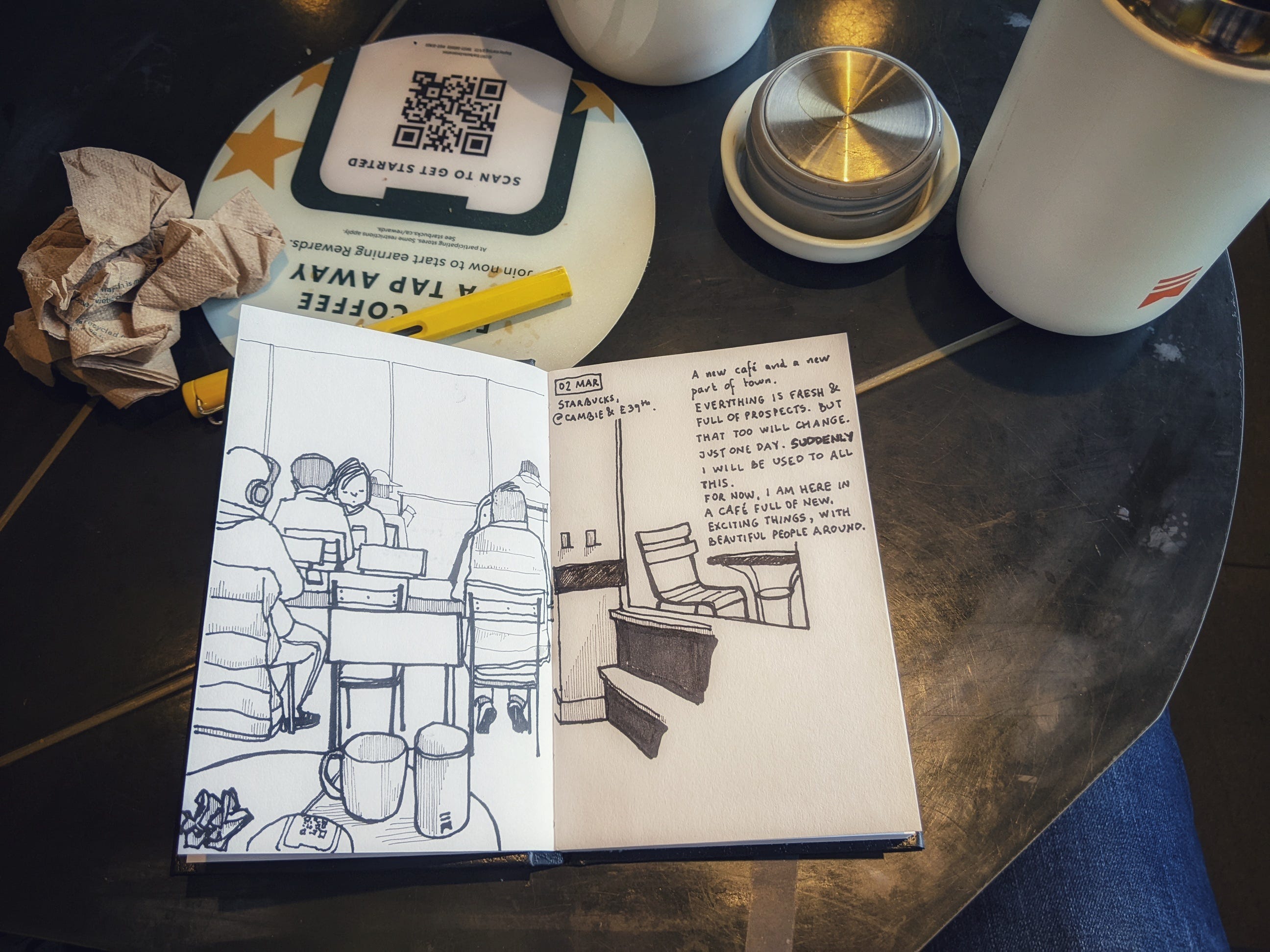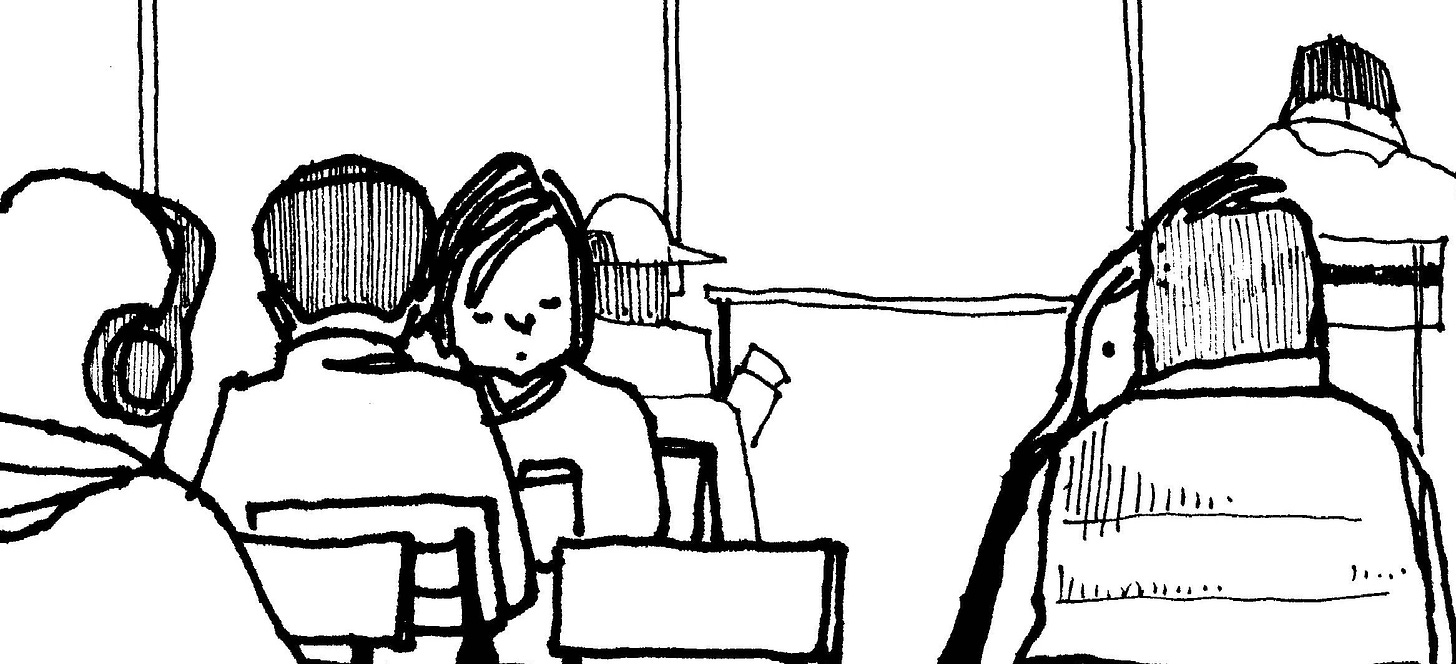👋🏼 Hello, readers!
I would like to share Episode 36 of the SneakyArt Podcast, where I speak with sketch-journalist Rita Sabler. Also, a scene from a new part of town.
🎙 Ep 36 - Finding Reasons to Draw with Rita Sabler
“The question that you should ask yourself is - why are you drawing this? What are you trying to show? And if the answer is not clear to you, it will never be clear to your audience. So you need to understand what it is that forces you to sit down, take out your tools.. and it’s an effort, it’s an effort every time to do that.”
Why is this question important, and is it worth the effort of answering every time? What does the audience stand to gain from this exercise? Rita thoughts around this become the basis of this lovely conversation.
In her role as sketch-journalist, Rita covers events that she finds important and shares stories through a combination of location-art and reportage. She has covered various protests in Portland (Oregon, USA), and most recently the rallies to seek justice for George Floyd. We speak also about her reportage of border-towns in Arizona, to document a world literally and figuratively divided by politics.
Rita explains how she balances the arduous responsibilities of artist and journalist. In this light we consider the why of her art, and the value that urban-sketching can offer in today’s media-landscape of unlimited screens and limited attention spans.
Listen to the episode with Rita Sabler on your choice of streaming service, or use a link below.
Spotify | Apple | PocketCasts | Google | Web | Gaana
💡💡 Ideas from the Conversation
Taking the example of her project titled ‘Bordertowns’, I asked Rita what motivated her to go down to the Arizona-Mexico border, and the kinds of stories she sought. How do the roles of artist and journalist play out?
Rita said she wanted to explore “the effects of living in proximity to the wall.” Her artistic leanings mean that her interest is rooted in a visual exploration of the world. She uses journalistic instincts to find human stories that dwell in the environment - interacting with border officers, hearing from locals with families on both sides, and documenting the lives of small business owners.
“It’s always a struggle, and an evolution of my approach.”
Rita refers to a sketcher’s desire to remain out of sight struggling against a journalist’s need to find good stories.
“When you draw in public, you do attract attention. People come up to you and ask questions… [But] when people see what you’re doing, they don’t feel threatened. They feel curious. They feel honoured.”
Instead of shying away from such occasions, Rita uses her art to help start a conversation.
Regarding her work documenting protests in Portland, I ask her what attracts her to such events. In what way does it help her, as a person and as an artist?
“It’s a group-processing act. As a person, it is incredibly powerful and therapeutic to be part of that. And also as an artist - I have the skill to document it, so it becomes a part of our history… Sometimes it’s so incohesive, and then it starts to make sense. That energy [of a protest] translates into this [page]. It’s both chaos and cohesion.”
It strikes me that sketching at a protest is perhaps the best argument of art for communication’s sake. Rita agrees,
“I don’t think so much about whether my shapes are proportioned, and if my perspective is correct... It’s sort of an experience, not so much a cohesive composition and drawing.”
But why a sketch? What unique value does a sketch have over a pic or video?
“As an artist-reporter, you are distilling a period of time into a drawing... It usually takes 45 minutes to 2 hours, so everything that happens becomes timelapsed into a 2-dimensional representation of the experience. At any point, you can add something to it...
Also, you are an editor of the drawing. The things that are not there are almost as important as the things you chose to capture. It’s a process of elimination, and leaving things to the imagination. So it’s also a participatory experience for them [the audience].”
Refer to my episodes with British illustrator George Butler, about sketching in war-zones, and Indian artist Zainab Tambawalla, about life in Mumbai’s forgotten neighbourhoods, for other conversations about the value of sketching as reportage.
👨🏻🎨 What is the purpose of art to human life?
What has it been in history, what is it today, and what does the future have in store?
In recent posts, I spoke about the re-imagining of art into a second narrative after the invention of photography, and the subsequent ‘end of art’ as described by the art critic Arthur Danto. I shared my journey towards accidentally becoming an artist, and the top lessons I learned about selling my work. Encapsulating ideas from Ep 34 with Shari Blaukopf, I suggest three reasons for the importance of authenticity. After speaking with Amit Varma on his podcast, The Seen and the Unseen, I put together thoughts on the wonderful question - Would Da Vinci have a TikTok Channel? As a bonus, think about these reasons to give art away.
My next Insider post is going to be about the looming spectre of AI in art, and what it means for us and the future. To get it in your inbox, sign up to become an Insider.
☕️ New Place to Sketch
We moved this week to an apartment near the Queen Elizabeth Park in Vancouver, and I have begun exploring my new neighbourhood. This week I visited the nearby Starbucks.
“Everything is fresh and full of prospects. But that too will change. Just one day. [And] suddenly I will be used to all this.
For now, I am here in a cafe full of new, exciting things, with beautiful people around.”
This is also the start of a new sketchbook, although I am not very happy with it. The ink blots if the pen nib lingers on the page, and there is even some bleed to the other side. I like the size of the pages though, and that it lays flat.
Next week, a tour of the recently completed Moleskine sketchbook (Nov 2021 - Feb 2022).
⏪ ICYMI
This Sunday, I shared the top lessons from Substack’s Grow Fellowship. Last week, I left some SneakyArt at a cafe in downtown Vancouver. I am told there is a phrase for such activity - Art Abandonment. SneakyArt Insiders won a raffle for original art and 2 books from me. I saw some things at the Vancouver Public Library.
Thank you for time and attention. See you next week!





